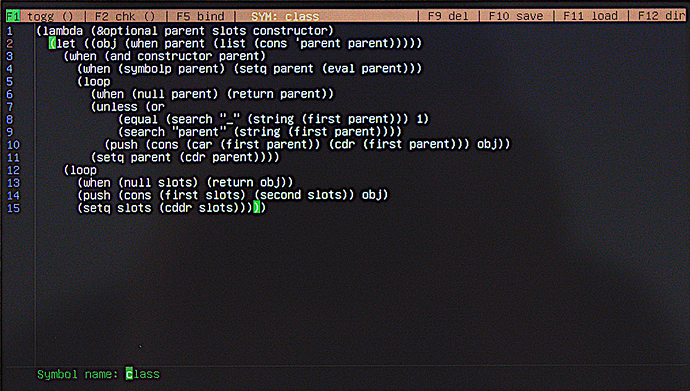Introducing the LispBox:
This is my version of the ultimate self-contained uLisp computer. No rocket science, though: Just the incredibly capable Teensy 4.1 running a modified version of the uLisp T-Deck firmware together with an 800x480 screen controlled by an RA8875 driver board.
The eye-friendly sized 7" screen offers 100 x 30 characters and hardware scrolling, the Teensy adds USB host support, i.e. support for a standard USB keyboard. I opted for a wireless mini-keyboard that fits into the front compartment of the box, but any other keyboard may be plugged in as well. Data exchange is easily possible thanks to the built-in SD card socket of the T4.1, but the standard serial connection is there as well, of course.
Since the Teensy offers more than one SDI port (actually “more than one” for just about any interface), it should be possible to connect a second screen for experimentation purposes. That’s the whole point of this rather blocky but functional box: Inside there are two half-size breadboards, and the Teensy sits on a Feather adapter that is plugged into the Feather tripler. Below ground level there’s a battery offering at least estimated 10 hours of uptime and a little box with common electronics components. Tinkering galore with 600 MHz, if I may say so.
I will post the firmware and the 3D print files as soon as I have tidied things up. I also want to develop a simple screen oriented uLisp editor to make adequate use of the large screen and the comfortable keyboard. The RA8875 even offers a blinking cursor which will come in handy.
In the rather short period of time of my acquaintance with uLisp I’ve somewhat fallen in love with it and decided to make it my primary MCU development platform. The LispBox is intended to resemble the hands-on feeling of old home computers - a barebones system that fires up in 6 seconds and can be explored and understood down to the registers. But unlike the old BASIC machines uLisp offers instant comfortable support of all kinds of peripheral devices, and unlike some other “retro feeling” approaches screen size and keyboard make it really usable on a regular basis. A dream has come true.


